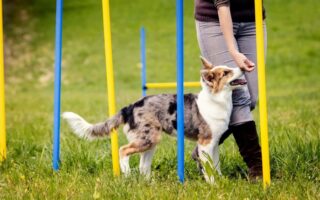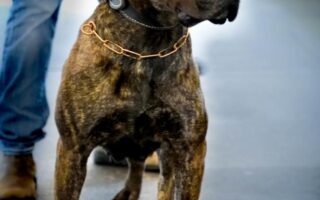Unleashing Potential: Exploring the Diverse Types of Dog Training
The bond between humans and dogs is as old as time itself, characterized by loyalty, companionship, and an unspoken understanding. However, while dogs may instinctively want to please their human counterparts, achieving a harmonious relationship often requires guidance and structure. Enter dog training—a dynamic field filled with a myriad of approaches designed to foster good behavior, enhance communication, and ultimately strengthen that cherished bond. From the timeless traditions of obedience training to the innovative techniques of positive reinforcement, each method holds its unique principles and philosophies. In this article, we will embark on a journey through the diverse types of dog training, unraveling the pros and cons of each approach and helping you find the best path to cultivate a well-mannered, happy companion. Whether you’re a seasoned dog owner or a first-time puppy parent, understanding these varied training methods will empower you to unlock your furry friend’s full potential.
Table of Contents
- Exploring Obedience Training Techniques for Everyday Success
- Understanding Behavior Modification Approaches for Canine Challenges
- The Importance of Socialization and its Impact on Dog Development
- Harnessing Positive Reinforcement Strategies for Effective Learning
- Q&A
- Wrapping Up
Exploring Obedience Training Techniques for Everyday Success
Effective obedience training involves a variety of techniques tailored to a dog’s personality and learning style. Among the most popular methods, you’ll find positive reinforcement, which encourages good behavior through rewards like treats or praise. This approach not only fosters a trusting relationship between you and your pup but also creates a fun learning atmosphere. Other methods, such as clicker training, utilize a distinct sound to mark desired actions, providing immediate feedback that helps dogs to comprehend what is expected of them.
Additionally, establishing a consistent training routine can significantly enhance your dog’s learning experience. Techniques like leash training help cultivate leash manners, preventing pulling and promoting a relaxing walking experience. Socialization exercises can also be crucial; exposing your dog to various environments, people, and other animals builds confidence and adaptability. Below is a simple table summarizing some effective obedience training techniques:
| Training Technique | Description |
|---|---|
| Positive Reinforcement | Using rewards to encourage good behaviors. |
| Clicker Training | Using a distinct sound to mark desired actions. |
| Leash Training | Teaching appropriate behavior while on a leash. |
| Socialization | Exposing dogs to different environments and beings. |
Understanding Behavior Modification Approaches for Canine Challenges
Behavior modification is an essential aspect of addressing canine challenges, unraveling the complexities of how dogs learn and adapt. The primary aim is to replace unwanted behaviors with positive, desirable actions, fostering a harmonious relationship between the dog and its owner. Various approaches exist, each tailored to respect a dog’s unique temperament and learning style. Some of the widely recognized methods include:
- Positive Reinforcement: Rewarding desired behaviors to encourage their repetition.
- Clicker Training: Utilizing a sound cue followed by a reward to mark correct behaviors, reinforcing learning.
- Desensitization: Gradually exposing dogs to stimuli that trigger bad behavior, helping them adapt positively.
- Counter-conditioning: Changing a dog’s emotional response to a trigger by pairing it with a positive experience.
Each of these methods serves to address distinct behavioral issues while promoting trust and responsiveness between the dog and handler. It’s essential to remember that consistency is key in every training approach. A structured environment, combined with clear commands and routines, aids in minimizing confusion for your furry friend. The following table summarizes some behavioral challenges with suitable modification strategies:
| Behavioral Challenge | Recommended Approach |
|---|---|
| Barking at strangers | Desensitization & Counter-conditioning |
| Pulling on the leash | Positive Reinforcement |
| Separation anxiety | Gradual desensitization |
| Chewing furniture | Redirecting with positive reinforcement |
The Importance of Socialization and its Impact on Dog Development
Socialization is a crucial aspect of a dog’s overall development, as it lays the foundation for their future interactions and behaviors. Through positive exposure to various people, environments, and other animals, dogs learn to navigate the world with confidence and ease. The significance of socialization cannot be overstated—dogs that receive adequate social experiences are less likely to develop behavioral issues such as anxiety, aggression, or fearfulness. By introducing your dog to new situations in a controlled and supportive manner, you help them build essential life skills that will enhance their well-being and enrich their relationships with both humans and other animals.
Effective socialization training should be tailored to the individual dog’s personality and needs, taking into consideration factors such as age and past experiences. The following elements are key to successful socialization:
- Gradual Exposure: Introduce your dog to new experiences slowly, allowing them to adjust at their own pace.
- Positive Reinforcement: Use treats, praise, or play to reward your dog for calm behavior in new situations.
- Diverse Experiences: Encompass a variety of environments—urban, rural, indoors, and outdoors—to ensure well-rounded exposure.
- Consistent Handling: Regular grooming and vet visits help your dog become comfortable with handling and operating under different circumstances.
Harnessing Positive Reinforcement Strategies for Effective Learning
Positive reinforcement is a powerful tool in the realm of canine education, transforming the often-daunting task of training into a rewarding experience for both dog and owner. By acknowledging and rewarding desired behaviors, trainers can effectively encourage their dogs to repeat those behaviors, creating a positive feedback loop. This approach not only fosters a deeper bond between the dog and handler but also enhances the learning environment, making it more enjoyable. Common methods of positive reinforcement include:
- Treats: Small, tasty morsels that dogs love can serve as immediate rewards.
- Affection: Verbal praise, petting, or a favorite toy can create a heartfelt connection.
- Playtime: Incorporating games as rewards can motivate dogs to engage actively.
Emphasizing the importance of consistency and timing in positive reinforcement strategies is crucial. When rewarding a dog, the timing must coincide closely with the behavior to create a clear association. To illustrate this concept, consider the following table that summarizes the key elements of effective positive reinforcement:
| Element | Description |
|---|---|
| Consistency | Ensure rewards are given every time the desired behavior is exhibited. |
| Timing | Provide rewards immediately to reinforce the action effectively. |
| Variety | Mix up rewards to keep training engaging and prevent boredom. |
Q&A
Q: What are the different types of dog training techniques?
A: Dog training encompasses a variety of techniques designed to teach dogs desirable behaviors and skills, as well as to foster a strong bond between dogs and their handlers. The most common types include:
- Positive Reinforcement: This technique rewards desired behaviors with treats, praise, or play. It encourages dogs to repeat good behavior by associating it with pleasant outcomes.
- Clicker Training: A subset of positive reinforcement, clicker training employs a clicker, which makes a distinct sound, to mark the exact moment a dog performs a desired action. The sound is followed by a reward.
- Leash Training: Focused on teaching dogs how to walk politely on a leash without pulling, this training helps build good walking habits and ensures a smoother experience when out and about.
- Crate Training: This involves teaching a dog to see a crate as a safe and comfortable place. It can help with house training, providing a safe space, and preventing destructive behaviors when the dog is unsupervised.
- Obedience Training: Often structured around basic commands (like sit, stay, and come), this training aims to establish a reliable communication channel between the dog and owner, laying a foundation for more advanced training.
- Socialization Training: Important for puppies, this technique exposes dogs to various environments, people, and other animals, helping them develop confidence and social skills.
Q: What is the importance of socialization in dog training?
A: Socialization is crucial in a dog’s early development. It involves exposing a dog to a variety of people, environments, and situations to help them feel comfortable and confident in diverse scenarios. Proper socialization can prevent behavioral issues, reduce anxiety, and create well-rounded pets that are more adaptable and sociable.
Q: How does behavior modification training differ from other types?
A: Behavior modification training specifically targets undesirable behaviors, such as barking, chewing, or aggression. Unlike traditional obedience training, which focuses on teaching commands, behavior modification involves identifying triggers for unwanted behaviors and systematically changing those behaviors through various techniques, often involving desensitization and counter-conditioning.
Q: What role does consistency play in dog training?
A: Consistency is fundamental in dog training. Dogs thrive in environments where commands, cues, and rewards are consistent. When owners use the same cues and reinforcement methods every time, dogs learn more effectively. Inconsistent training can lead to confusion, making it difficult for dogs to understand what is expected of them.
Q: Can I train my dog on my own, or should I seek professional help?
A: While many dog owners successfully train their dogs at home using books, online resources, or classes, professional trainers can offer specialized knowledge, techniques, and guidance tailored to your dog’s unique needs. If you encounter challenges or if you’re dealing with specific behavioral issues, seeking help from a professional trainer can be a valuable investment in your dog’s training journey.
Q: Are there training methods to avoid?
A: Yes, certain training methods are best avoided, such as those that rely on negative reinforcement or punishment. Techniques that scare, intimidate, or hurt a dog can lead to fear, anxiety, and aggression, ultimately damaging the bond between the dog and owner. Safe, humane, and positive methods usually yield the best results both for the dog and the owner.
Q: How do I know which training technique is best for my dog?
A: Choosing the right training technique depends on several factors, including your dog’s age, temperament, and specific behavior issues. Observing your dog’s reactions to various methods can help decide what works best. Additionally, consulting a professional trainer can offer insights tailored to your dog’s needs, ensuring a positive and effective training experience.
Wrapping Up
In the diverse world of dog training, understanding the various methods available is essential for any dog owner seeking to foster a harmonious relationship with their canine companion. From positive reinforcement to clicker training, agility exercises to scent work, each technique offers its unique benefits and challenges. The journey of training your dog is not just about teaching commands; it’s an opportunity to deepen your bond, enhance communication, and enrich their lives with purpose. As you embark on your training adventure, remember that patience and consistency are your best allies. So, whether you’re a seasoned trainer or a novice eager to learn, explore these different types of dog training and find the approach that resonates with you and your furry friend. Together, you can turn each lesson into a joyful experience—one paw at a time.


